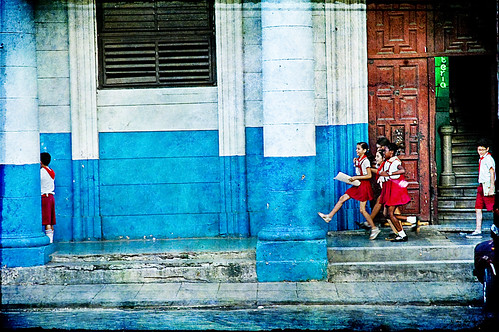In my last post, before real life blew up with exciting possibilities (within two weeks we’ve bought a house and sold our current one), I was going to write about some of the things I’ve seen online and some of the things I’ve been thinking about. I’ll be honest that this space feels a bit unfriendly, so my posts have been more self-absorbed than I would prefer because it’s felt safer that way. I haven’t wanted to stick my neck out again with a potentially unpopular opinion. But I have lots of opinions and I don’t want to let fear rule me, so I’m gonna jump back on that horse.
Last week, I saw a post at We Can’t Paint about how the author doesn’t like most street photography. As a street photographer myself, I was all set to get up in arms. But then I reread what he wrote and realized it wasn’t so bad. He said:
“This is not to say that I think street photography is bad, it’s simply my opinion that so much of this type of photography seems to only provide answers instead of questions (here comes the hate mail). This is to say that the visual puns as well as the often over done sentimental imagery of the genre keep me from connecting with it in a significant way.”
And then I remembered that I don’t like a lot of street photography either, much as it’s the closest label I can come up with for my work. As much as I enjoy visual puns (and verbal puns for that matter), a photo whose only point of interest is a visual pun more often than not leaves me feeling empty. I’d like to hear more about the author’s take on the “often overdone sentimental imagery of the genre,” because I’m not sure where to draw the line between emotional impact — a characteristic of great photos in my opinion — and sentimentality. I worried to a friend of mine recently that perhaps my photography romantizes poverty, but she was pretty emphatic that it does not. That by not being overwhelmed with pity for those in poverty, by seeing life and joy alongside the poverty, I was doing the opposite.
Last week, I caught up with Tony Fouhse’s blog and saw an older post in which he distinguished between eye photographs and brain photographs. He also raised the possibility of heart photographs, but I’m not sure just what to do with that. I think that the best photographs are both eye and brain photographs. The street photography that leaves me empty are purely eye photographs and the Art (capital A) photographs that I’ve seen a lot of lately are purely brain photographs with not much eye (I may as well just come out and say it: in my opinion a lot of conceptual photographs are just butt ugly). The example that Tony gave as a brain photograph is also very much an eye shot.
Anyways, since I started this blog, I’ve been collecting links to photographers whose work inspires me, whose images are both eye and brain photographs. If you haven’t checked them out, let me highlight a few. Just the other day, I found Edward van Herk, who’s done a great series in Soweto. Although I only spent most of a day in Soweto, I’ve spent a total of six weeks in South Africa, and I fell in love with the people. I love how he’s captured the spirit of the people.
I discovered Hector Mediavilla probably a couple of months ago now. My favourite work of his is of the Congolese sapeurs, people who dress in finery and pride themselves on impeccable manners in the Congo. He’s done three series and I love them all: one, two, and three.
With both of these photographers, I love that they are going beyond the stereotype of poor starving Africans. I think I came across both of those at the New Breed of Documentary Photographers, a great blog for finding new inspiration.
During the frenzied last few weeks, I haven’t shot much of anything, and I haven’t edited much of the backlog either. But I did get my galleries of Cuba and Parking Meters in Lunenburg up here.
Finally, Imagekind is offering 25 percent off frames until July 7, 2008, which applies to all of my images.



